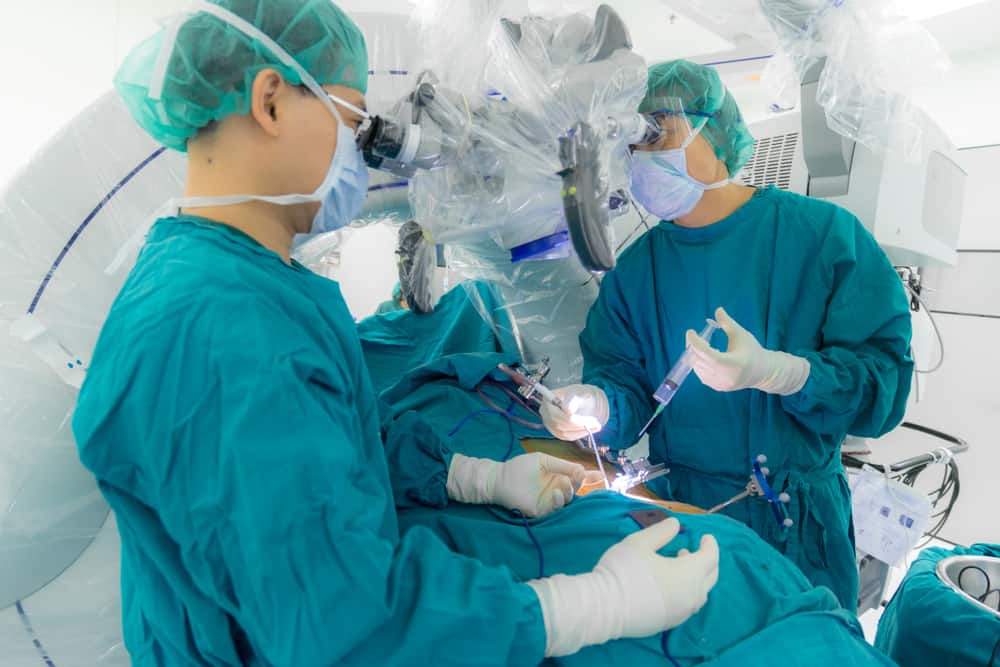When suffering from an injury or chronic pain, most doctors will tell you that surgery is a last resort to be explored after all other solutions. This can be especially true when the injury is related to your spine, as it’s a small and delicate area. But in recent years, innovations have allowed for a new technique that can offer healing with less risk: minimally invasive spine surgery. A doctor skilled in interventional spine medicine can utilize this cutting edge technology to alleviate pain and encourage healing without the risks of a major surgery.
What Is Interventional Spine Medicine?
A subset of both neuro spine medicine and neurology, the practice of interventional spine medicine has grown out a desire to perform surgical techniques on spines with less intervention than typically required. The goal of the practice is to use a new technique called minimally invasive spine surgery to address back and neck pain caused by a variety of issues. When used properly, this both avoids major spinal surgery and provides pain relief and healing to the patient.
The use of minimally invasive spine surgery has a number of benefits that make it the preferred choice of many doctors today. The procedures are typically outpatient, not requiring a hospital stay, and have shorter recovery periods. In some cases, local anesthesia is used instead of the more dangerous general anesthesia. The small incisions can also mean better cosmetic results, as well as a reduced risk of muscle damage due to cutting of the muscle. There is also less potential for blood loss, infection, and postoperative pain. This can reduce reliance on pain medication after surgery as well.
Is Minimally Invasive Spine Surgery For Me?
While minimally invasive spine surgery is not the answer for every issue, it can be applied to the majority of cases where spinal surgery is indicated. To determine if your case is a good fit for this technique, you may undergo extensive diagnostic testing to properly create a plan of treatment. Special imaging technology is used to perform minimally invasive spine surgery, and this advanced technology can also assist in the process of diagnosis.
The most commonly used tests are designed to indicate the state of your nerves, as well as their responsiveness, particularly after an injury. An EMG, or electromyography, may be performed to highlight muscle pain vs. pain caused by nerve disorders. An SSEP, or somatosensory evoked potential, can also test the ability of nerves to adequately communicate with the brain, while a nerve conduction velocity (NCV) can detect nerve impulses. These all help to create a picture of your spine’s function and what may need to be addressed in surgery.
In more complex or traumatic cases, standard diagnostic testing may be used to supplement these techniques. An MRI may point out soft tissue damage, or a CT scan may show the state of the internal organs, which is information that can be useful in making a determination regarding your treatment.
Minimally invasive spine surgery is commonly used to treat conditions such as degenerative disc disease, herniated discs, spinal deformities and tumors, vertebral compression fractures, and spinal instability.
How Does It Work?
The most common form of treatment is injections that are given to the patient, introducing a numbing agent or anti-inflammatory steroid directly to the area of concern. These injections often lead to months of pain relief, as well as allowing doctors to locate pain more specifically. Depending on the specific area where pain is occurring, injections can vary, with Epidural injections targeting leg and arm pain, facet joint injections aiding the joints, and nerve root injections directly impacting the nerve.
In addition to injections, patients may undergo radiofrequency neurotomy, which uses x-ray technology to deliver heat and radiofrequency to the area of pain, stopping nerves from transmitting pain. Intradiscal electrothermal therapy also uses heat, remodeling the walls of discs that have been damaged and cause pain.
Almost 90% of injuries to the back or the neck can be addressed using a minimally invasive technique, with similar success rates to their more invasive counterparts.
Seeking Care at AICA Orthopedics
AICA Orthopedics is proud to have a team of interventional spine specialists who can help address any back or neck issues and recommend these innovative techniques where appropriate. These doctors are highly trained in this practice and the diagnostic tools used to help make the best decision for your situation. In addition to these specialists, AICA Orthopedics also has physical therapists, chiropractors, and a pain management team available to add to your care and help you achieve the desired outcome.





